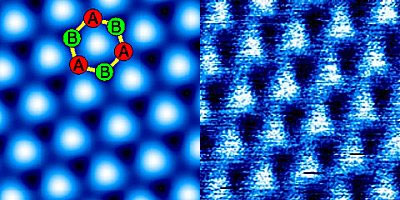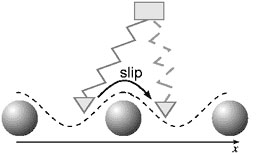Friction Force Microscopy and Tribology
Understanding atomic-scale contrast mechanisms

Our research activities concentrate on the investigation of the basic contrast mechanisms of atomic force microscopy (AFM). Various physical effects concerning this issue are strongly correlated to the field of nanotribology. Therefore, we used the modified Tomlinson model - invented in 1929 to explain friction on the nanometer scale - to simulate experimental atomic force microscope images and demonstrated that the imaging capabilities of an AFM are mostly limited by the stick-slip movement of the tip on the sample surface [1].

The above described limitations can be overcome using the so-called non-contact mode of the AFM (NC-AFM), which is our most recent research topic. We developed a method to measure tip-sample forces with high precision and without hysteresis [3]. Furthermore, we demonstrated how such a method can be used to analyze contact and non-contact forces [4]. To examine the correlation between NC-AFM images and the atomic surface structure of the samples we simulated images of graphite(0001) and compared them with experimental results [5].
